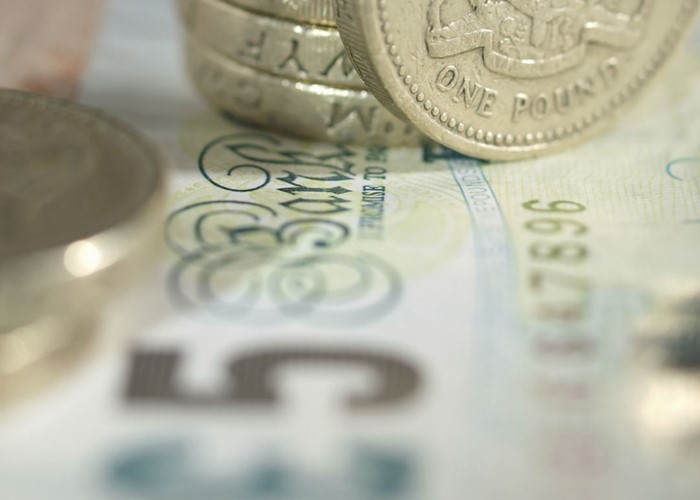Santander 123 current account pays cashback on your direct debits!

The new 123 current account from Santander allows you to earn cashback on your council tax, energy bills and mobile phone bills!
A new current account launches today, offering not only a market-leading rate of interest on balances up to £20,000, but also the opportunity to earn cashback on your monthly bills.
The Santander 123 current account gives you the opportunity to make a few quid back on the money you spend on your council tax, gas and electricity and even your mobile phone bill. It all sounds almost too good to be true.
So how does it work? And what are the catches?
Cashback on your council tax
Let's start with the exciting bit, the cashback offering. Everyone loves getting something for nothing, which is why sites like Quidco and Topcashback are growing in popularity. But this is the first time we've had the opportunity to enjoy a regular stream of cashback from certain monthly bills.
The name of the account is a clue as to how the cashback works. On your water bills and council tax you will enjoy 1% cashback. On your electricity and gas bills you get 2% cashback. And on your communications spending – so mobile phone bill, landline bill, broadband and any paid-for TV packages - you get 3% cashback.
So how much can I expect to make in cashback?
I pay about £1,200 a year in council tax and £300 on water. So that's £15 a year in cashback from this account. Next, electricity and gas. We are on a fixed tariff which means we pay £70 a month, so that's £840 a year. With this account, I'd get £16.80 in cashback.
Finally, our comms bill. I don't have any TV packages, but between broadband, landline and mobile phone bills for my wife and I, we spend in the region of £900 a year. So that's about £27 a year in cashback.
The catch is that all of these must be paid by direct debit directly from the current account.
Overall then, we could make almost £60 in cashback from the 123 current account. Money for nothing!
The account does not just offer cashback though – it also offers a pretty impressive rate of interest.
For balances between £3,000 and £20,000 there's a 3% rate of interest. This falls to 2% for balances between £2,000 and £3,000, and down to 1% for balances above £1,000.
Now some of you are no doubt thinking that's a decent rate, but not as good as the 5% offered by Santander's Preferred current account, which has been the market leader for a long time. The thing is, all of Santander's other current accounts (besides the most basic account) have been withdrawn as a result of the launch of the 123 account. So 3% is now the best rate around from a current account, and, in fact, is a pretty compelling offer compared to many specialist savings accounts.
What's more, this 3% interest rate isn't part of a 12-month introductory offer, so you should hopefully carry on receiving interest from this account for several years to come.
Earning even more cashback!
The cashback isn't limited to your current account either. As a result of taking out the 123 current account, you also get the 123 cashback card – and don't have to pay the £24 annual fee for having the card for the first year.
To see how the 123 cashback card compares to other cashback cards on the market today, check out this article.
The downsides
There are a few hoops to jump through. Firstly, each month you need to pay in £500.
And there's a fee to think about, of £2 a month. So in fact I wouldn't make nearly £60 in cashback from my direct debits – in reality I'd be looking at a return of around £35, which is not quite so impressive.
This is also not really an account to go for if you tend to end up in the red at some point in the month. With arranged overdrafts, you'll be charged £1 for each day in which you're overdrawn, up to a maximum of 20 days a month.
Finally, and no doubt the deal breaker for some of you, is the fact that this account is run by Santander. It's no secret that the Spanish bank has had a few 'teething troubles' when it comes to customer service, and that's put plenty of people off using them ever again.
However, I've had a Santander current account for a little over a year and I have to say I've had no issues.
How good is the 123 current account?
This account is going to be very tempting for a lot of people. I know I find it tempting. £35 a year in free money is an attractive thought.
The interest rate is excellent too. If we keep £3000 in our current account, we'll earn £90 a year in interest. And, on top of that, we'll have a full year's use of a decent cashback card without needing to pay an annual fee for the privilege.
If your bills are modest – perhaps you live on your own, or don't pay council tax – then it may work out that any cashback you'd earn would disappear courtesy of the annual fee. But for many people, the 123 account will offer a healthy chunk of cash, just for paying their bills.
More: The 38 savings accounts that beat inflation | first direct comes top again for customer service
Comments
Do you want to comment on this article? You need to be signed in for this feature